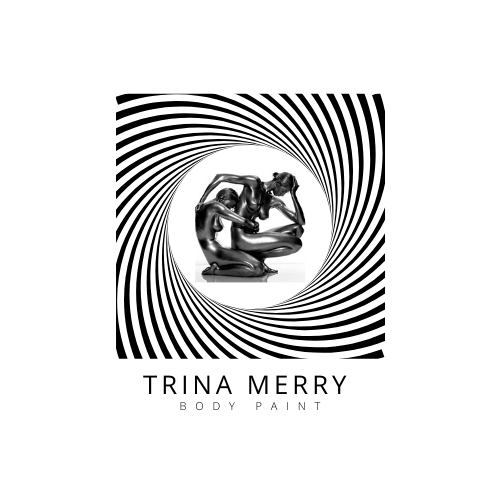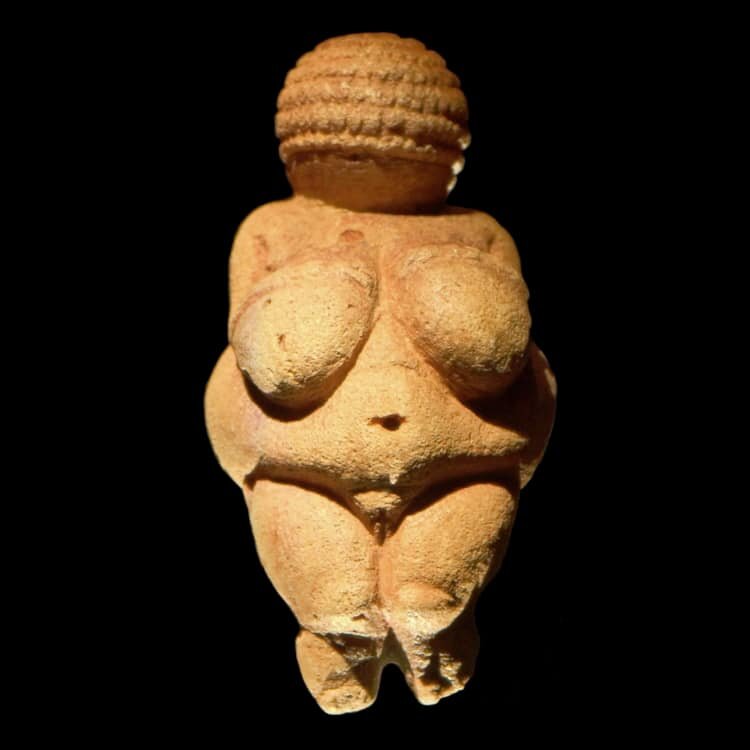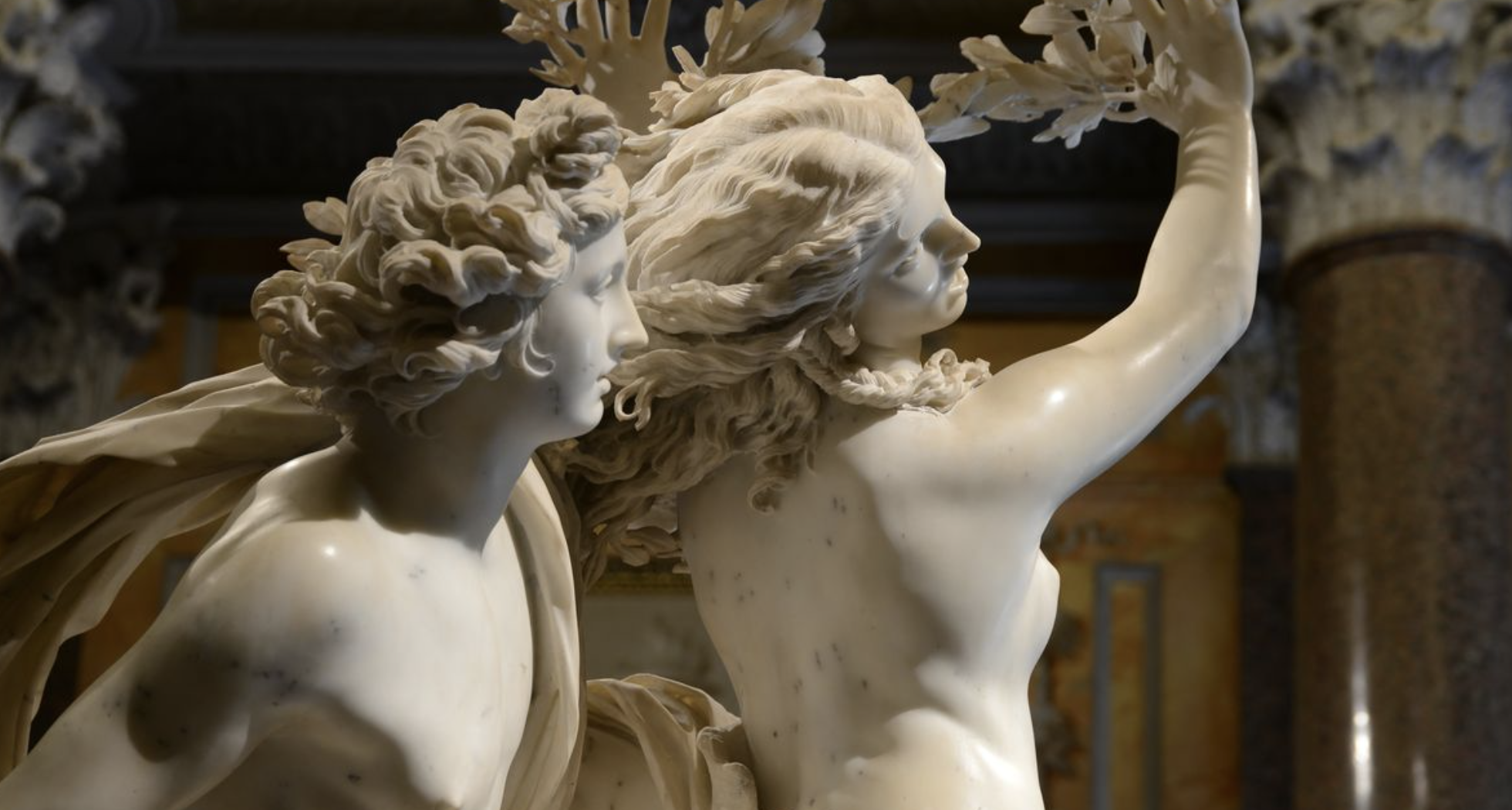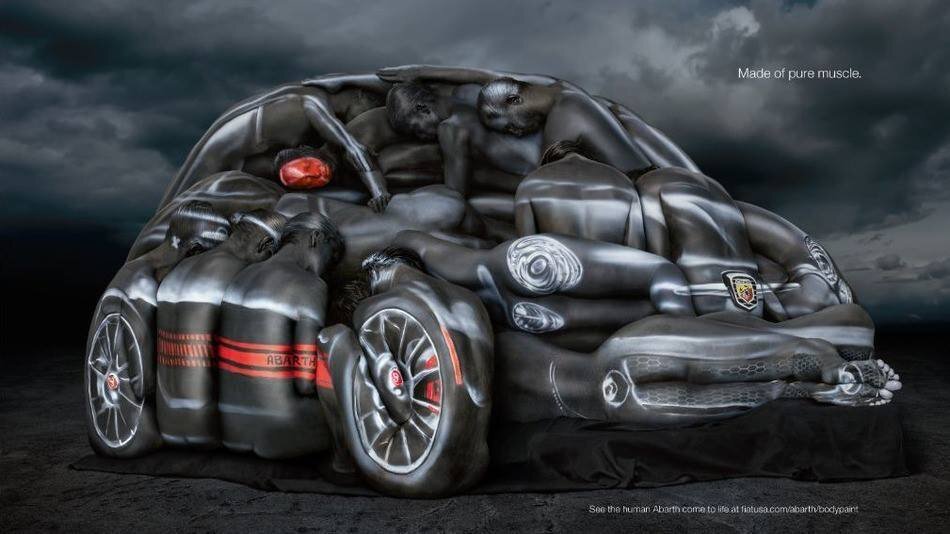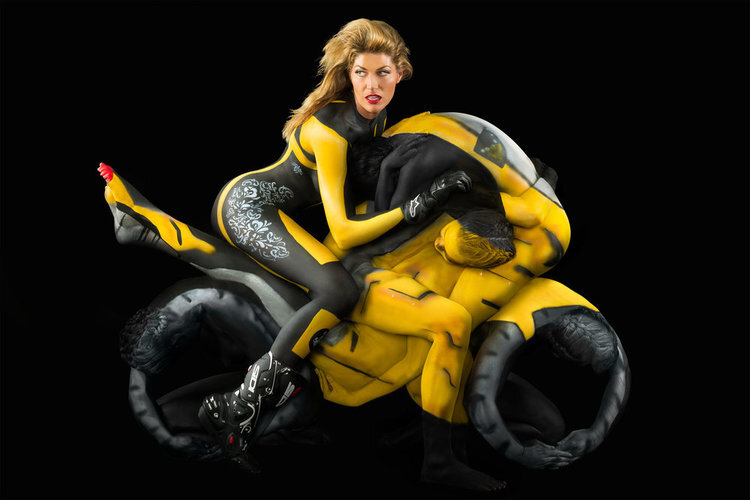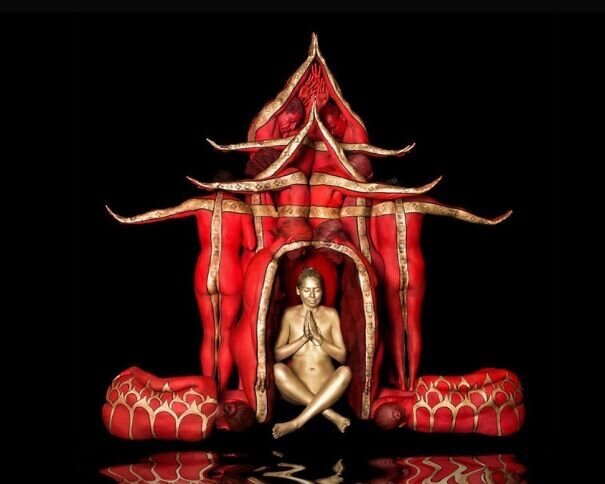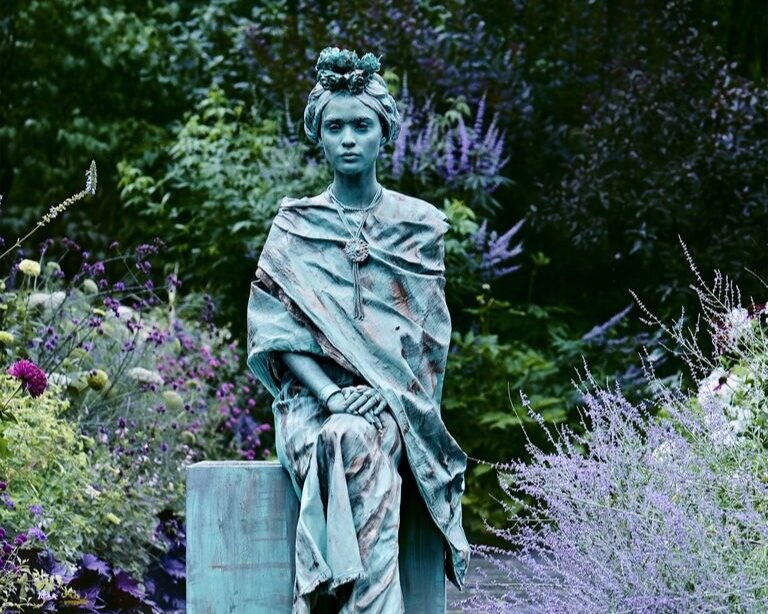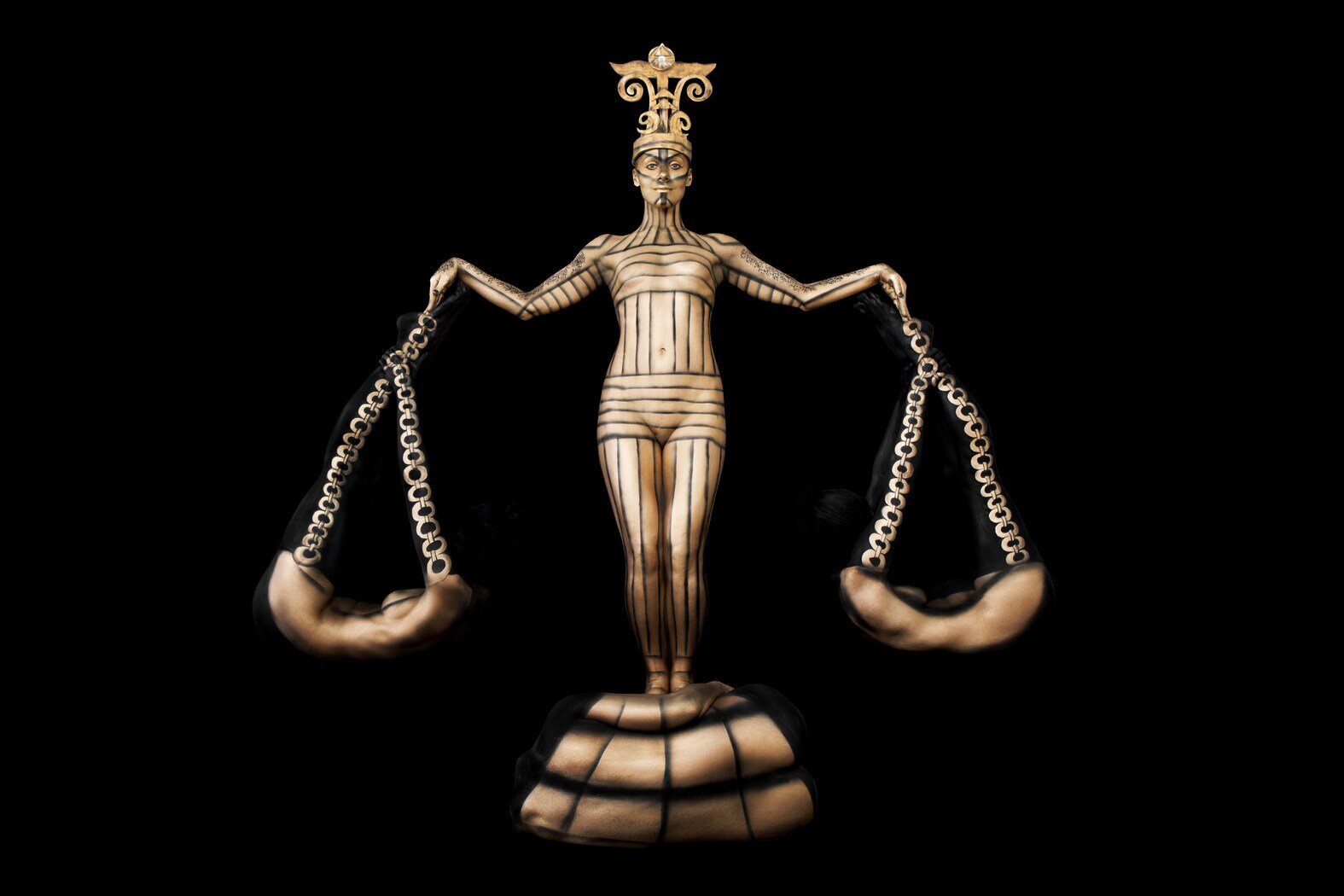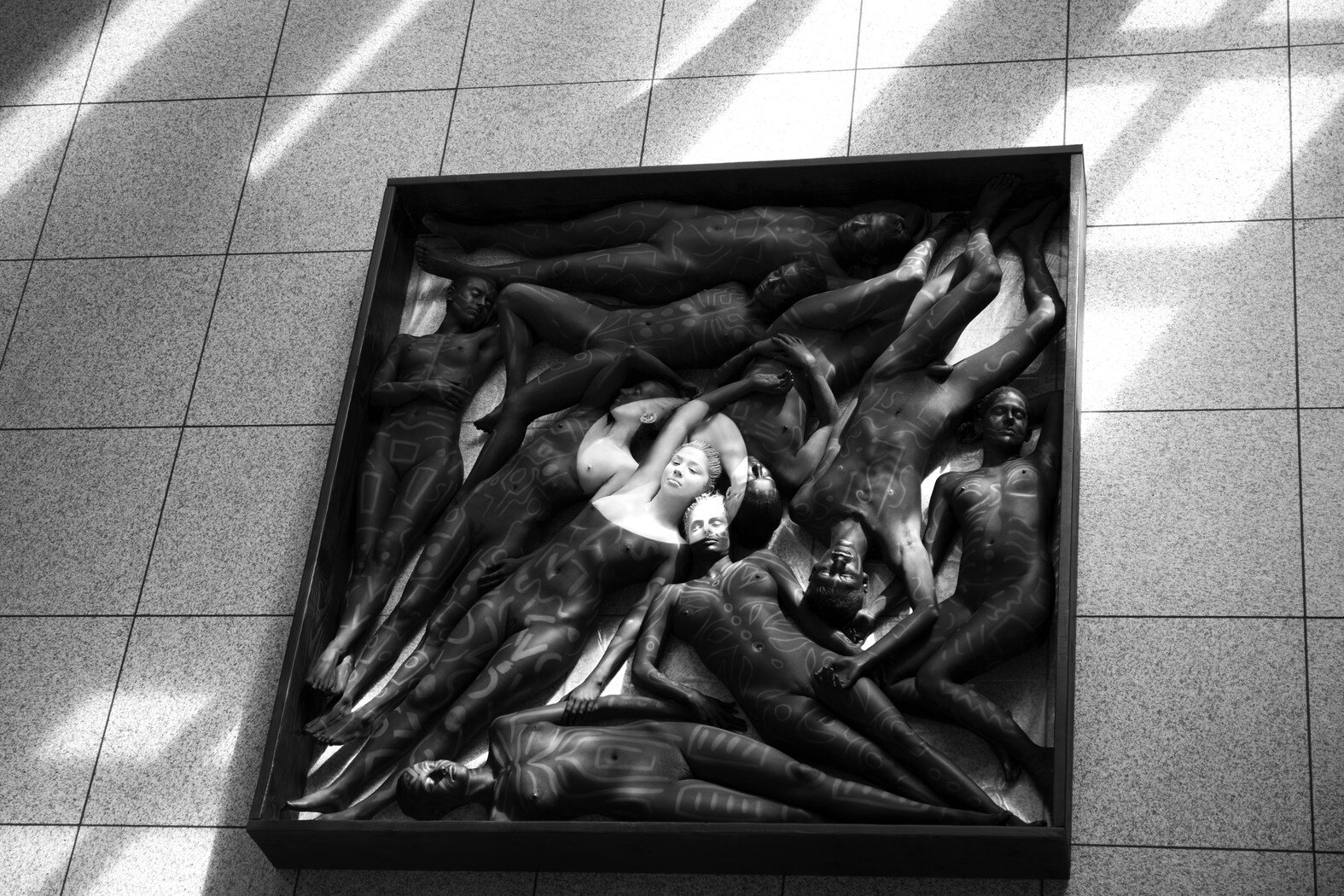History of the fine art nude sculpture
The nude figure has always been a source of inspiration for artists over the course of history and, as a surface, continues to be a source of inspiration for my nude bodypaintings. The human body conveys abstract emotion without using words and it represents the true nature of a person immortalized. The raw beauty that is revealed from the nude human figure has been sculptured, painted, photographed and even shocked the public. It has also been banned and criticized but, at the same time, it has been praised and celebrated.
The nude figure in art has been one of the most popular forms of expression. The history of nudity in Western Art begins with Greek art around 30-25,000 BC. In 1908, a small sculpture was discovered near Willendorf, Austria. It was a nude figure of a woman - popularly called Willendorf Venus created during this period. Like much of early art, she was a fertility symbol but connected to Greek mythology. The male nude body in Greek sculptures was used to portray ideal heroes and gods. The statues included ideal proportions of a male body, which was very different compared to the voluptuous female nude statue of Willendorf Venus.
After the rise of Christianity, western nude portrayals decreased and religious art rose. A good example of this was Adam and Eve's paintings, which usually had their genitalia covered. Nudity was used in such art as a signifier of shame and sin.
In 13th century Italy, there was a rediscovery of classical antiquity and nudity became an interesting subject in the visual arts. Artists such as Nicola Pisano and Giotto started showing awareness of nude artwork.
The golden age of renaissance came in the 16th century and a new ideal of beauty began when Leonardo da Vinci started representing naked figures in his work relating to anatomy. Titan’s nudes became increasingly sensual, Caravaggio’s paintings represented sensual male nudity such as Victorious Love and we can’t forget about Michelangelo’s David.
The impressionists painted naked bodies in the 19th century. The French painting came into the ascendancy and the female nude body became pre-eminent both in paintings and sculptures. Cabanel’s Birth of Venus is a good example of the deliberate use of female nudity. This art form came into its own. In Picasso’s Demoiselles d’Avignon (1907), he depicted four prostitutes in provocative poses and wearing the faces of ancient Iberian sculptures. We continued to see the classical and Renaissance traditions of female nudity later on in his work.
In contemporary art, with the modern knowledge of Freudian psychology, sexual urges and modern advertising, representations of nudity appear more often. There was a fine line between art and pornography.
Let's talk about beauty standards:
Our perception of beauty has changed a lot through history, an example of this is The Three Graces sculpture by Antonio Canova where the ideal woman was curvy and robust. His work challenged the baroque conception of opulent beauty.
Contemporary Human Sculpture Bodypainting
There's no doubt that the body will continue to be a source of inspiration. That's why we have recently done an interview with an amazing body paint artist based in New York - Trina Merry, whose canvas of choice is the human body. Her Human Sculpture Series creates sculptures using multiple bodies to trick the eye. These sculptures can take anywhere from 2-18 hours to bodypaint and uses 2-20 dancers in a carefully placed pose. They take about a month to design and choreograph. Her human sculpture series “Human Motorcycles” featuring celebrity rider Erin Bates went viral and won “Best in Show” at the San Diego Addy Awards. She created special motorcycles for America’s Got Talent and Nippon TV’s Itte Q where she painted a Japanese celebrity. She created Human Cars for Fiat with Craig Tracy and New York International Shows. One of our favorite pieces is the Human Temple which features 17 performers. This was created live at WORKS San Jose with Tibetan monks chanting during the performance. Her series “Objectified” examines our relationship to the objects we own. In this series, only one person is painted and becomes several objects as the person tries to find their “identity” in a consumer-driven society.
Changing the way nudity is perceived is not an easy task but Merry’s work is aesthetically pleasing and offers a natural view of her understanding of beauty.
Interview with Trina Merry
Q. As a person who bodypaints nude models, what’s your understanding of beauty?
A. Advertising tells people they’re incomplete... ugly, their skin isn't perfect, their body should come in a standardized shape & never age, they should be a certain height, etc. Very few people can live up to these expectations. I see the body differently- I see where light and shadows fall across a model’s curves or hard muscles, I see not only skin tones but undertones, the goosebumps forming across an arm or sweat rolling down a neck. Having traveled around the world in places where I don't speak the same languages as my models, the body communicates far more than words ever could- it’s a tool to talk to each other. I’m interested in how each person has a unique shape and how they can pose using the strength, flexibility, and calmness of mind they have developed.
Q. Do you think body painting is not equal when it comes to male nudes?
A. Traditionally, male and female models have been the subject of art, but as art has historically tended to come from a male artist perspective or commission, there are more female nudes. As more female artist voices are included both in art history and in the contemporary art scene, we will see a new perspective on the human body and our culture.
Bodypaint came to contemporary art by performance artists in the 1950-70s expressing ideas about free love, anti-war, & feminism. It was a tool used by women to bravely tell their stories. Verushka, Yayoi Kusama and Ana Mendieta are examples of female artists using bodypaint at this time in juxtaposition with Yves Klein’s work with female bodypaint brushes.
In the 1980-2000s, bodypaint was entered mainstream culture by advertising, editorials, and music video. Some men were body painted, but the advertising world was largely using women, as they say, “sex sells”. Sports Illustrated released its annual Sports Illustrated swimsuit issue featuring supermodels and celebrities with body painted swimsuits for sale by Joanne Gair. The 2000-2020s saw bodypaint reemerge as a contemporary art form with viral trends in optical illusion works like camouflage by Trina Merry, Emma Hack, Craig Tracy, Emma Cammack, Bella Vollen, Natalie Fletcher, Liu Bolin, Orly Fay, and Filippo Ioco and human sculptures by Johannes Stoetter, Emma Fay, Gesine Marwedel, Trina Merry, Craig Tracy, and Emma Hack and the 2D Works by Alexa Meade. It’s a return to the galleries and museums as well as body-positive events like “New York Bodypaint Day” by Human Connection & Andy Golub and the growth of the World Bodypaint Festival which celebrates artists from around the world, brought nude bodypainting back into the contemporary art conversation. While some TV shows like Skin Wars, Face Off, & Naked Vegas still favor female models over male models, it's not reflective of this inclusive movement seeking to express our unique cultural moment.
Q. We are living in a politically correct time. Have you been criticized for painting nude models?
A) Yes, my artwork surface choice has created misunderstandings. I’ve nearly gotten arrested and had conversations with cops while body painting. I’ve had friends and family misunderstand what I’m making and say I’m making porn. I’ve been censored on social media, TV and magazines. My work is not depicting adult sex acts, sex toy usage, nor is it explicit erotica. Contemporary artists like Spencer Tunick have joined together to spread awareness, education and understanding of the fine art nude.
This is a big world. Utah and Las Vegas, the Amish and New Orleans Mardi Gras exist in the same country; scantily clad African indigenous tribes and mysteriously covered Islamic women in burkinis… who is to say what is “right” or not? It's subjective.
We are all born nude. Clothing can be practical and yes even a fun expression, but it shouldn't be so shameful.
Q. What does the future hold for bodypainting and nude figure portrayal?
A. Artists working with the figure will continue to be inspired by the natural, intimate, and vulnerable, fine art nude.
Bodypaint is niche fringe art and it's still staking its ground in the contemporary art conversation. It’s been slower because you can go to art school and study regular sculpture but my friends and I aren’t (yet) teaching body paint human sculptures in universities and the art market has been a little slower to represent artists, despite its viral PR appeal and strong collector base.
Q. Some people think the nude female body is sexualized when artists expose nude figures in their work. What do you think body paint artists should do to change this taboo around the naked body?
A. This is perhaps an uneducated view of art history. It comes from a Cis hetero patriarchal system. Not everyone sees this way and I'm very interested in the female-identifying artists reclaiming that space and sharing the story of the female gaze.
Nudity does not equate to sexuality and I think its important to discuss this because that kind of thinking leads to excusing violent crimes against women (& trans) like rape.
I’m excited that more people are getting educated on what the word “consent” means. I work with volunteer models or people who are paying me to paint them so, to be clear, there’s no force involved on my part, they are quite willing. I find comments about exploitation or forcing the models to be nude or objectifying women to be laughable or confusing. These courageous women are strong and empowered- they are choosing to stand nude in public and reclaim that space.The fine art nude is a person free and natural - for me, it expresses the essence of humanity.
Artists tell the stories of their time and their culture. What can we express about nudity in American culture? I see the Puritanical repression and the fierce conservative “good old (Trump) boys” fighting to keep America. And I see women rising and having a cultural revolution, saying “my body, my choice”. I see fashion designers creating for curvy women and body positivity conversations. I see conversations around gender, identity and sexuality. I see bodies affected by technology, advertising, dating apps, dick pics & entertainment. We may even travel to Mars soon... so why are we arguing about fine art nudes?
